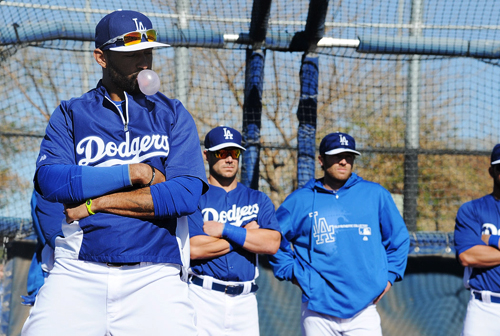In less than a month, I will be flying to Phoenix for five days of sun and baseball. From mid-February to late March, southern Arizona is a hotbed of baseball activity with teams such as the San Francisco Giants, Los Angeles Dodgers and Texas Rangers. And although more than 1.5 million people attended games during last year’s Cactus League spring training, the ballparks usually aren’t filled, allowing onlookers to choose their own seats and, if desired, get up close and personal with their favorite players. It’s a much different environment than a regular season exhibition game and one that, so far, has produced quite a bit of interesting news.
Baseball is back

In less than a month, I will be flying to Phoenix for five days of sun and baseball. From mid-February to late March, southern Arizona is a hotbed of baseball activity with teams such as the San Francisco Giants, Los Angeles Dodgers and Texas Rangers. And although more than 1.5 million people attended games during last year’s Cactus League spring training, the ballparks usually aren’t filled, allowing onlookers to choose their own seats and, if desired, get up close and personal with their favorite players. It’s a much different environment than a regular season exhibition game and one that, so far, has produced quite a bit of interesting news.
With the Angels’ much-touted offseason acquisition of Josh Hamilton and the Rangers’ critically acclaimed prospect Jurickson Profar set to begin his major league career, it’s surprising that both teams have struggled. But spring training standings should always be taken with a grain of salt. For one, the lineup is subject to constant substitutions that filter in minor league talent, so a big-name star may only play two or three innings. Additionally, pitchers tend to only get one inning of play, maybe two if they’re on a hot streak. Since a win in a spring training game has no bearing on the regular season, managers are free to try out every strategy in the book, and so the results are not truly indicative of each team’s overall talent.
Another reason managers are wary about leaving marquee players in too long is that there is a possibility that one of them could sustain an injury. Case in point: Curtis Granderson of the New York Yankees. In Sunday’s game against the Toronto Blue Jays, pitcher J. A. Happ drilled Granderson in the forearm, forcing him to leave the game. Later, X-rays revealed a fracture, meaning that Granderson will be out for the first two months of regular season play. While the pitch was a bit of a freak accident, the chance of injury is always greater if managers rely
too heavily on their star players.
Of course, fans flock to Arizona to see Joey Votto hit a home run in a 10,000-seat ballpark, or to put their faces up to a chain-link fence and watch Matt Kemp take batting practice. I recently read one report that Oakland Athletics Cuban-born sensation Yoenis Cespedes hit a home run at batting practice with a weight donut still attached to the bat. To swing a weighted bat at such a speed to launch a baseball beyond the stands is mind-blowing, but the possibility to witness it at a close distance is a memory that will be passed on through your children and your children’s children.
Imagine seeing Ken Griffey Jr. score a double as a young prospect in 1989, or witnessing five-time Cy Young Award-winner Randy Johnson beaning a dove that flew in front of the batter. OK, maybe the latter event would be a bit traumatizing, but there’s no denying that spring training is the destination for anyone who wants to be a part of baseball history.





